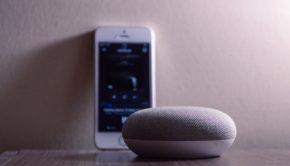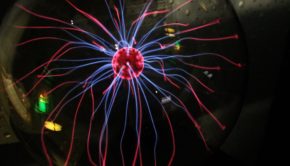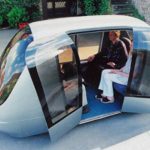Specific Nanotechnology Devices
How can specific nanotechnology devices or approaches lead to improved contrast? For each of your specific examples, explain the physical basis of action of the contrast enhancement and describe the potential applications
Nanotechnology is the part of science that include manipulation of structures at the molecular levels. The functional structures designed from the atomic level allow them to exhibit significantly improved physical, biological and various chemical properties. The nanotechnology allows the study of natural systems and material entirely at the scale where they were informed. Multiple applications of the nanotechnology concept and techniques have the potential of helping to provide the physical relationship that exists between the cellular components and only functional irregularities. Michael Freund has worked on nanotechnology and has explained these concepts in is articles.
Use of the nanotechnology has played a significant role in contrast enhancement thereby helping the scientist and their students to understand the molecular basis of various biological systems. The molecules themselves are too small to be observed, and therefore the application of the contrast agents helps in monitoring of the interest molecule. The following are some specific example of nanotechnology devices and their applications.
Nanodiagnostic device
The primary goal of the nano diagnostic tools is to try and identify the disease at the earliest possible stage. These devices help in creating a highly sensitive and highly reliable detectable agent. Using this method the tissue to be examined is first imaged using particular contrast nanostructure. In this case, the nanostructure aid in the formation of the picture and therefore helps the doctors to establish the type of infection present in the tissues. After the diagnostic of the disease, the targeting nanostructure combined with a pharmacologically active agent for the therapy. Also, it is also possible to monitor the progress of the treatment using sequential imaging of the nanostructures.
Implantable drug delivery systems
The implantable drug delivery system is a type of nanotechnology device that is implanted inside the patient body to help in minimizing the need for regular examination. These devices can deliver a few drugs to the patient on a daily basis. Most of these devices are also able to give the patient consistent drug levels. Controlled release of the drug achieved through utilizing of various microtechnology of the electrical system and individual remote controlled flow rate through the manipulation and maintenance of constant pressure difference in the body.
Moreover, the use of the drug delivery system has several advantages compared to the usual drug delivery methods, because it allows a targeted local delivery of the drugs into the particular tissue. Use of this device also plays a role in helping to minimize the amount of the medicine required and the possible side effect of the drug. It is also evident that the drug delivery systems have also played an important function in the delivery of non-soluble drugs. Also, these devices also help to protect unstable drugs. However, the method is also costly compared to conventional dosage forms.
Implantable glucose sensors
The implantable glucose sensors are types of devices that use nanotechnology to help the diabetic patients monitor their blood sugar levels. The sensor devices can employ in the detection and prediction of the hyperglycemia as well as hypoglycemia in the human body.
The monitoring of the glucose levels in the blood based on the wrapping of different kinds of molecules around the nanotubes. The nanotubes are embedded under the skin using the hydrogel. The changes in the blood glucose levels cause the nanotubes to swell which in turn causes fluoresce of the tubes. The nanotubes do not break down, and therefore it is possible to monitor the glucose levels. Use of these device helps to provide accurate and reliable data regarding the status of the blood sugar levels. Also, use of these devices also aids in the monitoring of the metabolism levels among the diabetic patients. However, according to Bartlett, the device can also pose risks of infection due to the piercing of the skin.
From the above, it is evident that the application of the nanotechnology imaging has played a significant role in improving the provision of the healthcare. Use of the nanotechnology has helped to enhance the contrast of images employed in the diagnosis of the tissue infections. The various drugs delivery system has also played a role in helping the doctors to monitor the provision of the drug into the target tissue. Continuous application of the nanotechnology in the field of medicine will, therefore, contribute increase accuracy in both the diagnostics and treatment of various diseases.
About the Author:
Carol James is an EssayLab psychology department writer and senior editor. She has MA degree in social sciences and is an excellent specialist in this field. Carol worked with numerous materials on the subject and is eager to share her knowledge with our readers.











![Dark Web Dealing: the price of hacked information (2016 research) [Infographic]](https://technofaq.org/wp-content/uploads/2017/03/DarkWeb_infographic-150x150.png)





One Response to Specific Nanotechnology Devices